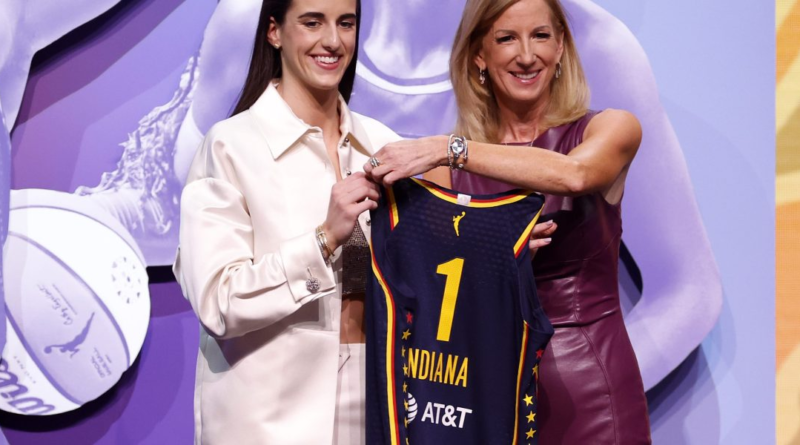Caitlin Clark is the hottest new WNBA player in a decade—but she’s making less per year than the average New York worker
Basketball phenom and WNBA rookie Caitlin Clark knows how to hit three-pointers and smash glass ceilings: She’s the all-time scorer in college basketball—men’s or women’s—with 3,951 points, the first NCAA player to score 3,800 points, and a three-time NCAA First Team All-American member, all by the age of 22. But by her WNBA salary, you’d never know it.
The No. 1 pick for the WNBA draft on Monday, Clark is slated to make just $76,535 her first year on the Indiana Fever. That’s less than the average $78,620 salary of a New Yorker, according to Bureau of Labor Statistics data. She’ll make a total of $338,000 during her four-year contract, per the WNBA’s collective bargaining agreement.
Meanwhile, the starting salary for the NBA’s first-pick rookie is expected to be $10.5 million—137 times more than Clark’s salary.
The shocking pay disparity becomes starker when you look at the rapidly rising popularity of women’s basketball. The viewership of the women’s NCAA March Madness tournament eclipsed that of the men’s this year, with a record 18.7 million viewers watching the South Carolina Gamecocks and the University of Iowa Hawkeyes square off, compared to 14.82 million watching the men’s final. Tickets for Fever games in 2024 are set to double year-over-year, with the Las Vegas Aces changing their venue for their matchup against the team to accommodate twice as big an audience.
But the growing interest in women’s basketball isn’t just the Clark effect: The 2023 WNBA season drew in 36 million unique viewers, a 27% increase from the year before and the league’s biggest audience since 2008, according to the WNBA.
Clark’s comparatively low salary is just one high-profile example of the persisting gender pay gap in America. Indeed, women still make on average 18% less than their male counterparts, a gap that grows to 39% for Black women and 54% for Latina women—and has existed in basketball before Clark became a household name. In 2023, WNBA players make an average $113,295 as base salary, with the highest salary in the league a little over $241,000, compared to an NBA player’s $9.7 million. That’s 85 times more.
Thinking outside the paint for salary supplements
To be sure, Clark will likely make several times her salary in name, image, and likeness (NIL) deals. She made $3.1 million in NIL last year, the fourth-highest of any college athlete. Those partnerships, such as with Gatorade and Nike, will not only continue through her NBA tenure, but are likely to expand. It’s not unprecedented for professional athletes to make more money through brand deals than their salaries: Stephen Curry and LeBron James both had eight-digit endorsement and sponsorship deals last year, with Curry earning $50 million on top of his $48.9 salary, and James earning $80 in addition to his $45.7 million salary.
This WNBA draft class in particular has the potential to make waves in the NIL market, Sam Ybarra, talent agency The Marketing Arm celebrity and influencer team manager, told Fast Company.
“Having a large number of NBA fans following a lot of these women in college will flip an entirely new fanbase over to the WNBA when they get drafted,” he said.
Women in professional basketball have found creative ways to supplement their watered-down WNBA salary. Six-time WNBA All-Star and two-time Olympic gold medalist Brittney Griner, who was detained in Russia for 10 months after authorities found cannabis oil in her luggage, said she played ball in Russia in order to have an additional stream of income. Griner made more than $1 million in Russia, four times her WNBA salary. Basketball legend Sue Bird also made most of her wealth playing basketball in Russia for a decade, earning 10 times her first WNBA salary of $60,000.
“The whole reason a lot of us go over is the pay gap,” Griner said in an April 2023 press conference. “A lot of us go over there to make an income to support our families, to support ourselves.”
The sport has made some strides in rectifying pay inequity. A collective bargaining agreement ratified in January 2020 gave WNBA players a 53% salary boost, as well as maternity leave and access to fertility and adoption services. Despite the changes the WNBA has made, Griner continues to push for increased media coverage of the sport.
“I’m hoping that our league continues to grow,” she said. “I hope a lot of these companies start to invest in our craft.”




